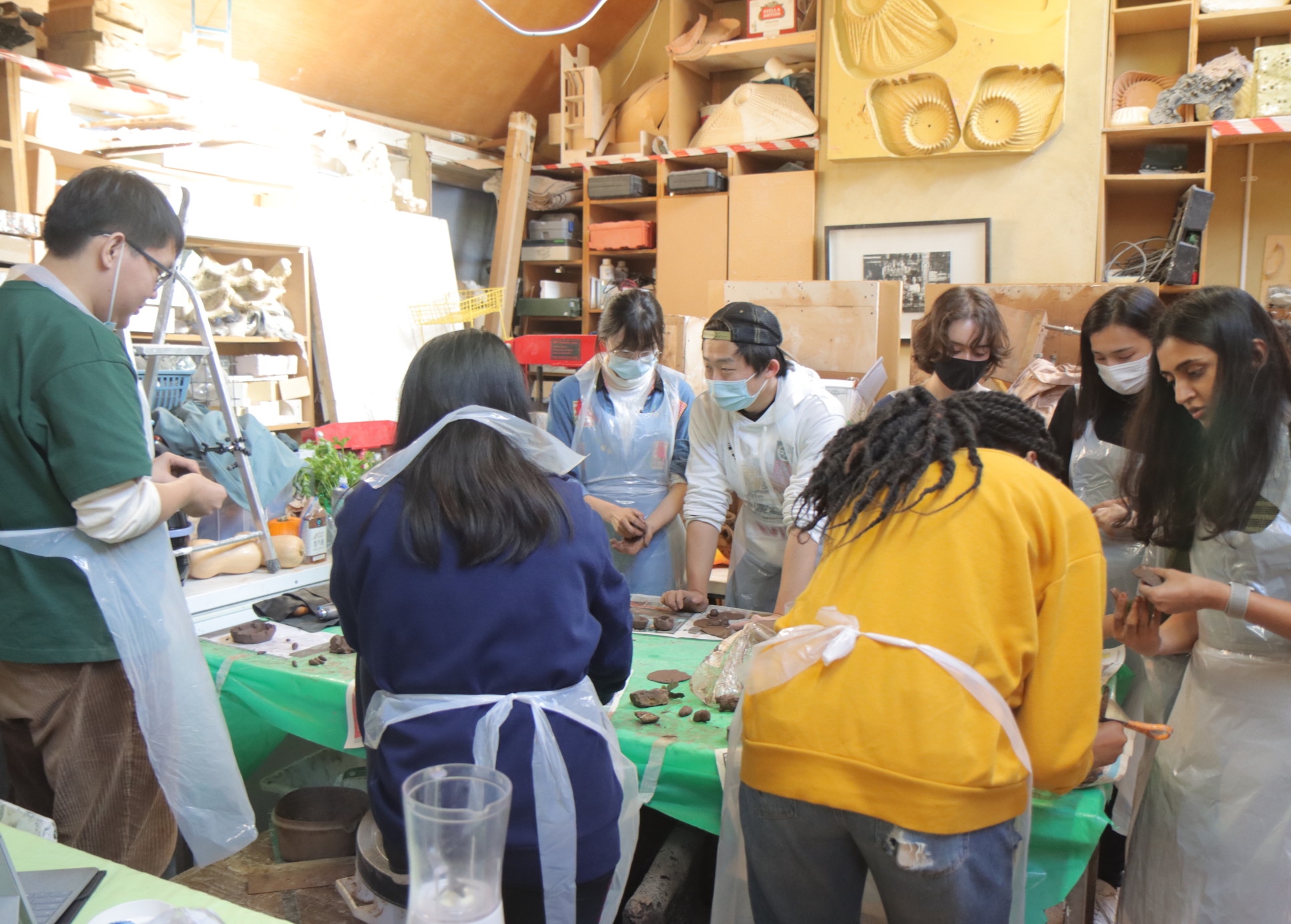Global S&T Development Trend Analysis Platform of Resources and Environment
| Innovation Design Engineering students tackle '1.5°C Cuisine' challenge | |
| admin | |
| 2022-01-06 | |
| 发布年 | 2022 |
| 语种 | 英语 |
| 国家 | 英国 |
| 领域 | 资源环境 |
| 正文(英文) |
Students from the Dyson School of Engineering experienced an innovative residential that fused design with food to help tackle the climate crisis. Fifty students from the Innovation Design Engineering course – a joint Master’s with the Royal College of Art (RCA) – went to Grymsdyke Farm in Buckinghamshire for a three-day residential. Based in Lacey Green, Grymsdyke Farm is a research facility, fabrication workshop and living-working space for artists, designers and those interested in materials and the processes of making. Locally sourced ingredientsThe course, run by tutors from the Dyson School of Engineering and the RCA, challenged eleven teams of students to create a dish for a climate-friendly feast for the year 2050. The students used locally sourced ingredients including beans, lentils, potatoes, spices, eggs, milk, honey and flour. Teams were given a single ingredient that they had to base their dish around such as cavalo nero, butternut squash and seaweed which had been brought from the Kent coast. Tim Corvin, course tutor from the RCA said: “The brief we set the students was to create dishes for the climate emergency – the 1.5 degrees limit that we’re trying to achieve as part of the Paris protocol. It’s going to be very difficult to achieve unless we start to address the sustainability of our food production. So the objective was to create pieces that respect our environment and help people to understand what is possible within a sustainable cuisine.” Students spent time with local organic farmers to understand about sustainable farming. Imperial tutor Audrey Gaulard explains why this was so important: “We want to show them how we feed people, how things grow. Everything takes time. Everything is a lot of work. We want to make sure they understand the roots of where our food comes from. It’s really important they understand the full cycle of the food industry before they design.” Design workshop As well as creating the dishes, the students had to make materials needed for serving and eating the dishes. They had access to materials including clay, wood, metal, rubber, stone, moss, plants and bark as well as a kiln, laser-cutting, hand tools and a robotic arm. Hemal Dias, an Innovation Design Engineering student said: “It’s definitely encouraged me to be more resourceful and creative. I quite like the idea that everyone has different materials and you have to work with what you have got – you can’t Amazon deliver something in for tomorrow. If anything, that’s made us do more cool and creative things.” Chefs in residence
“Working with food, you have so many different senses and feelings – texture, the colour of the food and the sound of the food when you eat it.” Shefali Bohra Innovation Design student The students were supported by three chefs in residence who provided some basic skills training and were on hand to advise and provide expert guidance during the design phase. This included helping the students know which plants they could safely forage to add to their dishes. Final dishes in the vegetarian tasting menu included an oyster shell filled with boiled down seaweed stock and vegan caviar topped with crispy artichoke and caramelised sugar. Annie Nichols, Head of Food at Haeckels, was one of the resident chefs and a judge of the final menu. She explained: “It’s incredible what they have created. For a lot of the people who aren’t even cooks they have created some amazing dishes.” Designing for the futureDr Elena Dieckmann said: “Sustainability is an increasingly important part of design, and as course tutors it really important that we introduce sustainable thinking and practices to our students. They are the designers and problem solvers of the future and they will feel the impact of the climate crisis more than any generation before them. “The Innovation Design Engineering course has many international students which means that we have a real fusion of different cultures and different ideas. Exposure to different ways of thinking and doing things means that our students learn to work collaboratively to develop a shared vision, which are of course also essential skills as we work together to protect our planet.” Find out moreThe joint Innovation and Design Engineering has been running for 40 years, and graduates receive an MSc from Imperial and an MA from the Royal College of Arts. Applications are currently being accepted for the 2022 course. More information is available on the Imperial and RCA websites. Video and photos: Joel Trotter |
| URL | 查看原文 |
| 来源平台 | Imperial College London |
| 文献类型 | 新闻 |
| 条目标识符 | http://119.78.100.173/C666/handle/2XK7JSWQ/344060 |
| 专题 | 资源环境科学 |
| 推荐引用方式 GB/T 7714 | admin. Innovation Design Engineering students tackle '1.5°C Cuisine' challenge. 2022. |
| 条目包含的文件 | 条目无相关文件。 | |||||
| 个性服务 |
| 推荐该条目 |
| 保存到收藏夹 |
| 查看访问统计 |
| 导出为Endnote文件 |
| 谷歌学术 |
| 谷歌学术中相似的文章 |
| [admin]的文章 |
| 百度学术 |
| 百度学术中相似的文章 |
| [admin]的文章 |
| 必应学术 |
| 必应学术中相似的文章 |
| [admin]的文章 |
| 相关权益政策 |
| 暂无数据 |
| 收藏/分享 |
除非特别说明,本系统中所有内容都受版权保护,并保留所有权利。
修改评论